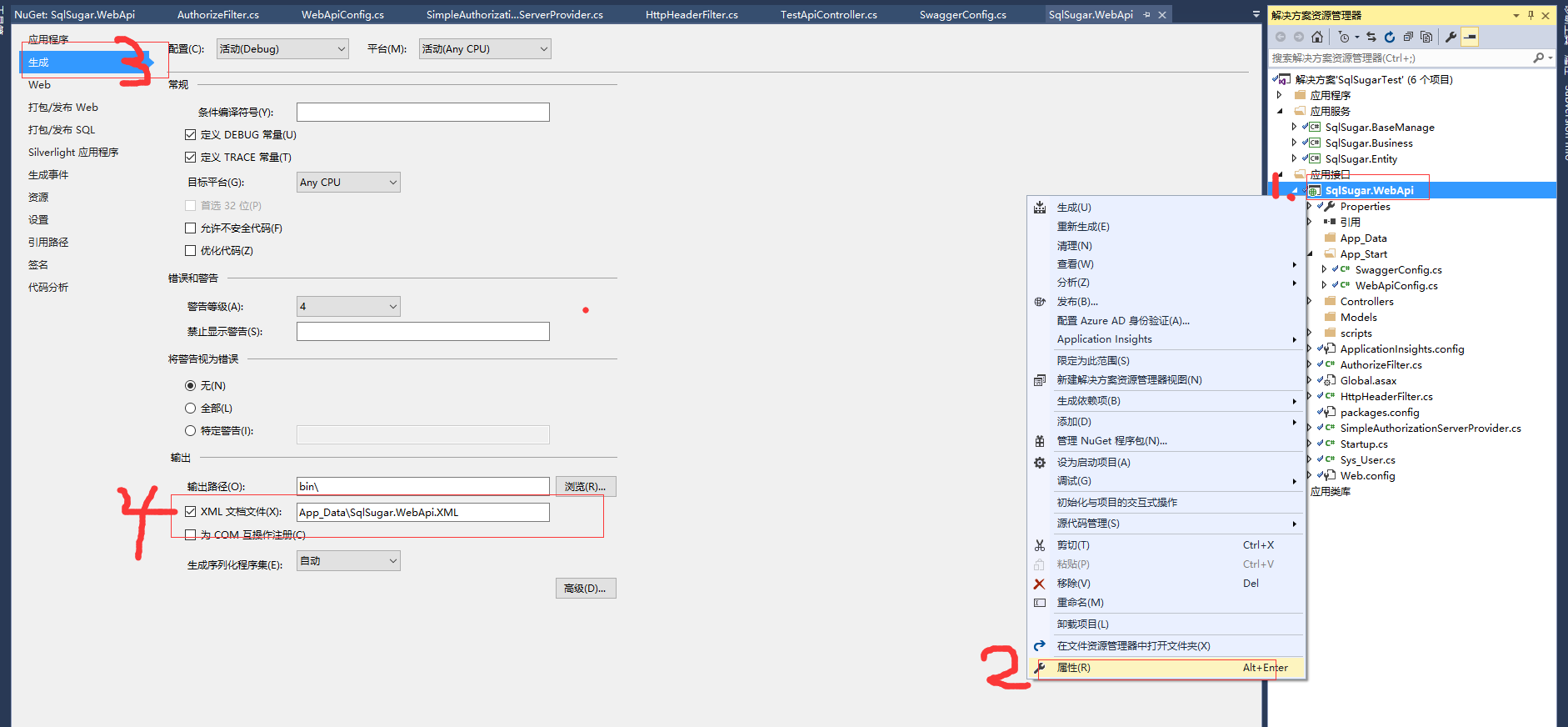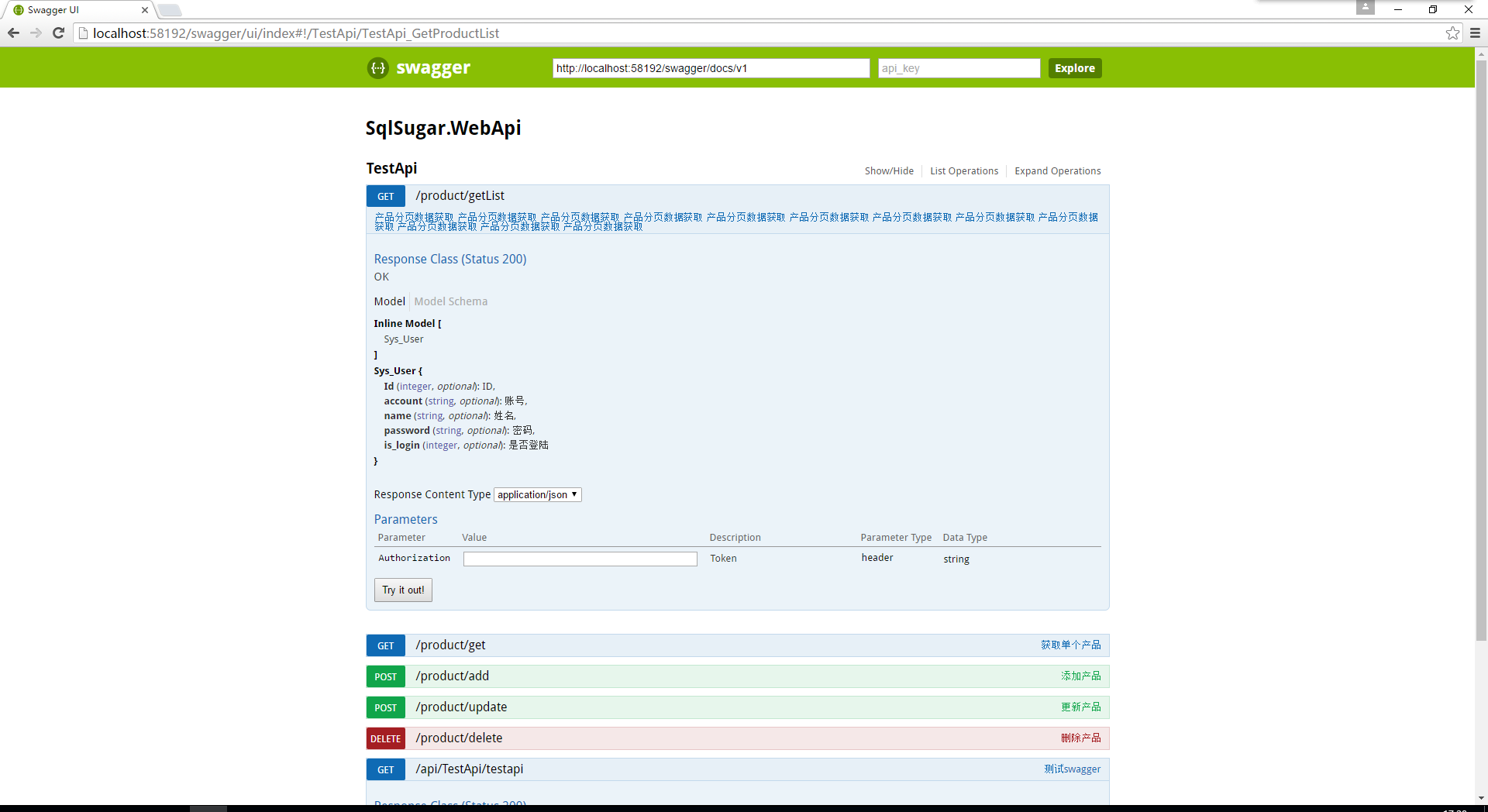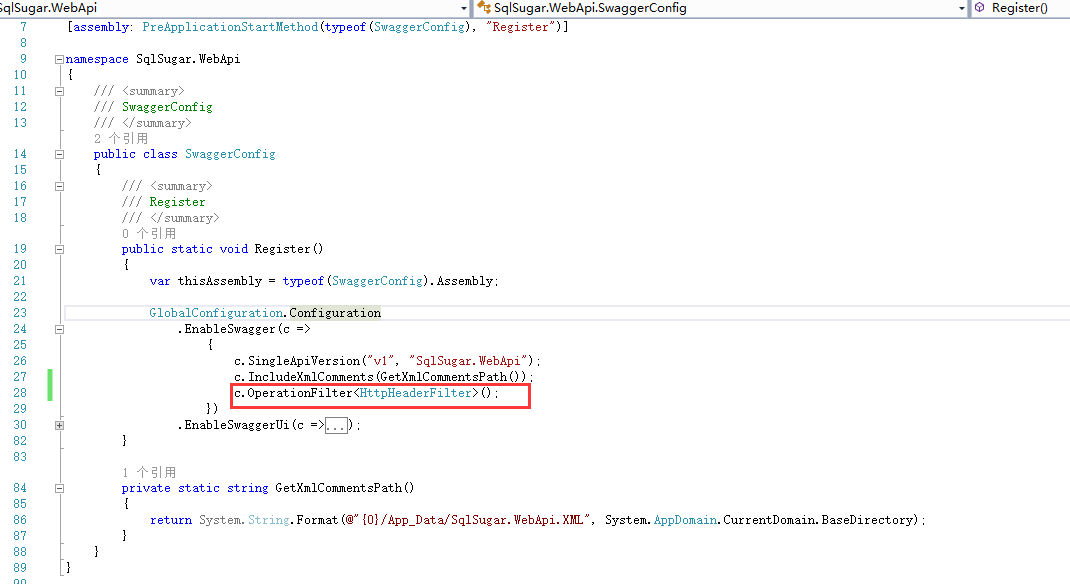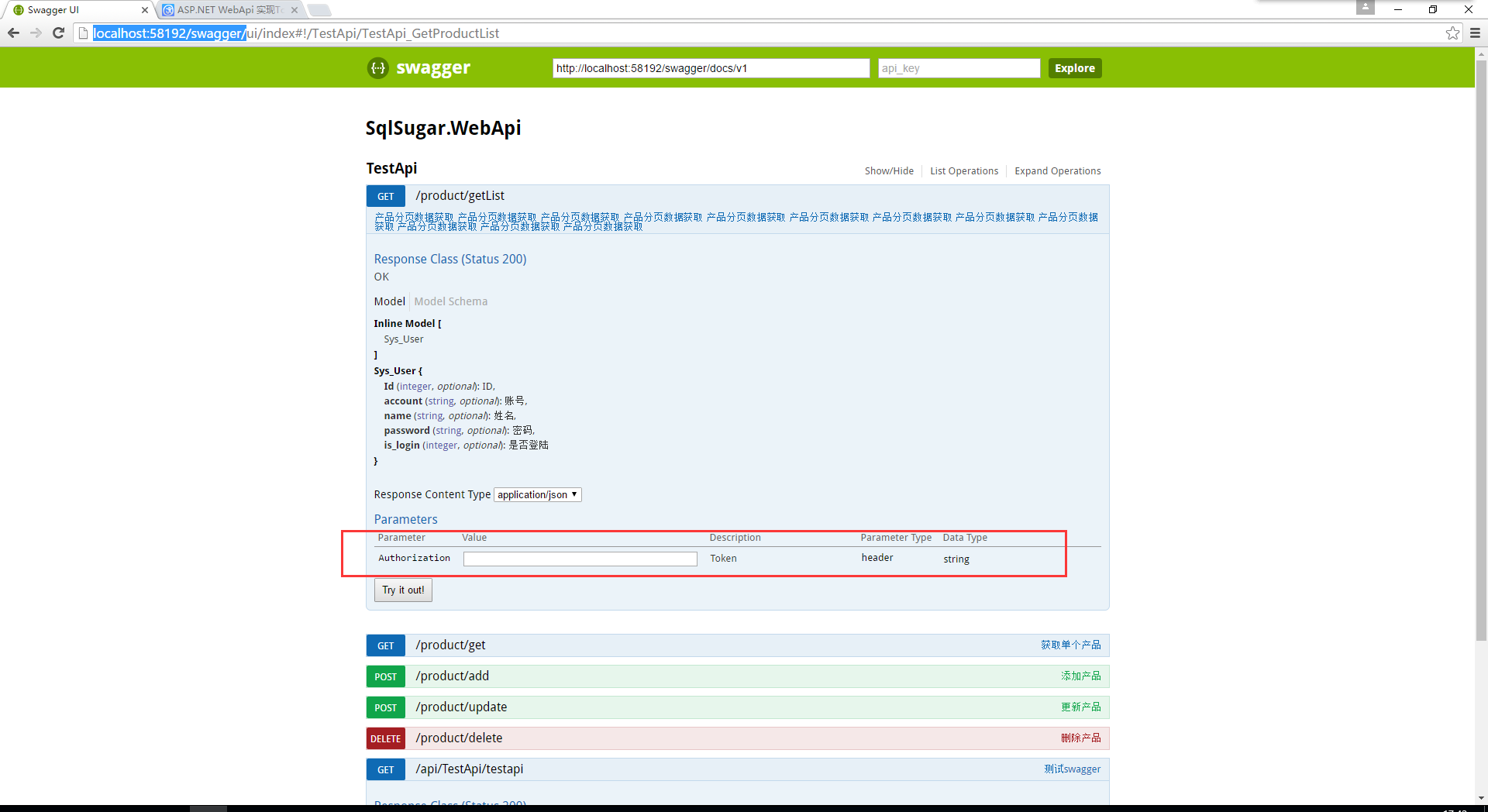基于Swagger 实现 webapi 自动生成在线测试文档
Step1 添加NuGet包 Swashbuckle
step2 修改SwaggerConfig.cs
Swasshbuckle 安装完成之后会在App_Start下创建一个名为SwaggerConfig.cs的类,把内容替换为:
using System.Web.Http;
using WebActivatorEx;
using SqlSugar.WebApi;
using Swashbuckle.Application;
using WebApi;
[assembly: PreApplicationStartMethod(typeof(SwaggerConfig), "Register")]
namespace SqlSugar.WebApi
{
/// <summary>
/// SwaggerConfig
/// </summary>
public class SwaggerConfig
{
/// <summary>
/// Register
/// </summary>
public static void Register()
{
var thisAssembly = typeof(SwaggerConfig).Assembly;
GlobalConfiguration.Configuration
.EnableSwagger(c =>
{
c.SingleApiVersion("v1", "SqlSugar.WebApi");
c.IncludeXmlComments(GetXmlCommentsPath());
c.OperationFilter<HttpHeaderFilter>();
})
.EnableSwaggerUi(c =>
{
// Use the "InjectStylesheet" option to enrich the UI with one or more additional CSS stylesheets.
// The file must be included in your project as an "Embedded Resource", and then the resource's
// "Logical Name" is passed to the method as shown below.
//
//c.InjectStylesheet(containingAssembly, "Swashbuckle.Dummy.SwaggerExtensions.testStyles1.css");
// Use the "InjectJavaScript" option to invoke one or more custom JavaScripts after the swagger-ui
// has loaded. The file must be included in your project as an "Embedded Resource", and then the resource's
// "Logical Name" is passed to the method as shown above.
//
//c.InjectJavaScript(thisAssembly, "Swashbuckle.Dummy.SwaggerExtensions.testScript1.js");
// The swagger-ui renders boolean data types as a dropdown. By default, it provides "true" and "false"
// strings as the possible choices. You can use this option to change these to something else,
// for example 0 and 1.
//
//c.BooleanValues(new[] { "0", "1" });
// By default, swagger-ui will validate specs against swagger.io's online validator and display the result
// in a badge at the bottom of the page. Use these options to set a different validator URL or to disable the
// feature entirely.
//c.SetValidatorUrl("http://localhost/validator");
//c.DisableValidator();
// Use this option to control how the Operation listing is displayed.
// It can be set to "None" (default), "List" (shows operations for each resource),
// or "Full" (fully expanded: shows operations and their details).
//
//c.DocExpansion(DocExpansion.List);
// Use the CustomAsset option to provide your own version of assets used in the swagger-ui.
// It's typically used to instruct Swashbuckle to return your version instead of the default
// when a request is made for "index.html". As with all custom content, the file must be included
// in your project as an "Embedded Resource", and then the resource's "Logical Name" is passed to
// the method as shown below.
//
//c.CustomAsset("index", containingAssembly, "YourWebApiProject.SwaggerExtensions.index.html");
// If your API has multiple versions and you've applied the MultipleApiVersions setting
// as described above, you can also enable a select box in the swagger-ui, that displays
// a discovery URL for each version. This provides a convenient way for users to browse documentation
// for different API versions.
//
//c.EnableDiscoveryUrlSelector();
// If your API supports the OAuth2 Implicit flow, and you've described it correctly, according to
// the Swagger 2.0 specification, you can enable UI support as shown below.
//
//c.EnableOAuth2Support("test-client-id", "test-realm", "Swagger UI");
});
}
private static string GetXmlCommentsPath()
{
return System.String.Format(@"{0}/App_Data/SqlSugar.WebApi.XML", System.AppDomain.CurrentDomain.BaseDirectory);
}
}
}
Step3 创建生成XML
右键你的项目→属性→生成→选中下方的 "XML文档文件" 然后保存

step4 启动你的项目
访问地址为:http://localhost:58192/swagger/

扩展:在Swagger中 实现 自定义 HTTP Header
在开发移动端 API时常常需要验证权限,验证参数放在Http请求头中是再好不过了。WebAPI配合过滤器验证权限即可
首先我们需要创建一个 IOperationFilter 接口的类。IOperationFilter:
using System;
using System.Collections.Generic;
using System.Linq;
using System.Web;
using System.Web.Http;
using System.Web.Http.Description;
using System.Web.Http.Filters;
using Swashbuckle.Swagger;
namespace WebApi
{
public class HttpHeaderFilter : IOperationFilter
{
public void Apply(Operation operation, SchemaRegistry schemaRegistry, ApiDescription apiDescription)
{
if (operation.parameters == null)
operation.parameters = new List<Parameter>();
var filterPipeline = apiDescription.ActionDescriptor.GetFilterPipeline(); //判断是否添加权限过滤器
var isAuthorized = filterPipeline.Select(filterInfo => filterInfo.Instance).Any(filter => filter is IAuthorizationFilter); //判断是否允许匿名方法
var allowAnonymous = apiDescription.ActionDescriptor.GetCustomAttributes<AllowAnonymousAttribute>().Any();
if (isAuthorized && !allowAnonymous)
{
operation.parameters.Add(new Parameter { name = "Authorization", @in = "header", description = "Token", required = false, type = "string" });
}
}
}
}
在 SwaggerConfig.cs 的 EnableSwagger 配置匿名方法类添加一行注册代码
c.OperationFilter

接上篇token验证中的权限过滤 地址:http://www.cnblogs.com/dukang1991/articles/5627584.html
添加权限过滤器

运行 swagger

